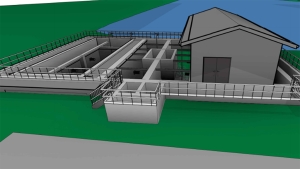The hard-fought battle by the drywall industry and affiliated groups to persuade the provincial government to lift the prohibition on stilts for use by tapers and insulators is nearly over.
Skilled labour
The hard-fought battle by the drywall industry and affiliated groups to persuade the provincial government to lift the prohibition on stilts for use by tapers and insulators is nearly over.
And it looks like the industry will have its way.
Only minor changes in the language of a new provincial regulation for stilts currently have to be worked out, says Bill Nicholls, business manager and secretary-treasurer of the International Union of Painters and Allied Trades, (IUPAT) District Council 46. The regulation could be in place by the end of the year.
Stilts have been illegal in Ontario for more than 40 years, but in the past decade the industry has been lobbying the province to lift the prohibition prompted partly by changing working conditions in the highrise and lowrise residential sector. Ceilings are getting higher (10 and 11 feet) which makes it difficult for finishers to work from a bench or a ladder.
Nicholls, who has played a key role in the lobby efforts, sees the new regulation as “a win-win” situation for the industry and government.
Stilts not only speed production, but they might be safer to use than benches, the traditional means for tapers and insulators to reach ceilings.
Benches are believed to be the source of lower back strain for many tapers, says Rob Bucci, director of Woodbridge-based Maple Drywall Inc., a large drywall contractor that works in the lowrise and highrise residential sectors in the Greater Toronto Area.
A six-month ergonomic study at the University of Waterloo that compared stilts to benches in practical applications revealed stilts to be “far less harmful over the long term on repetitive strain than benches,” adds Jim Steketee, the Construction Safety Association of Ontario’s manager of the labour-management department.
Maple Drywall, like many other drywall contractors in the GTA, subs out work to tapers and insulators on a piecework basis. While the contractor takes a “zero tolerance” stance to the use of stilts on its sites (during the prohibition), that hasn’t stopped subs from using them illegally, says Bucci.
Workers caught on stilts by a Ministry of Labour inspector face fines of $250 but the penalty for contractor that hired them is up to $5,000 – not an easy pill to swallow and rationale for why contractors like Maple Drywall “regularly does safety walks” on their sites, watching for rule breakers.
“The problem is that within a few minutes of you leaving that site, the workers are getting off the benches and putting their stilts back on,” explains Bucci.
Hugh Laird, executive director of the Interior Systems Contractors Association (ISCA) of Ontario, has been lobbying the government for more than 10 years to lift the prohibition on stilts. The issue has always been about safety, he says.
Laird’s hope is that WSIB insurance premiums will drop when stilts are legal because they have proven to reduce repetitive strain injuries associated with work on benches.
The stilts themselves, he points out, are more ergonomic than the stilts of a decade or two ago.
Once the regulation is in place, only trained and certified tapers and insulators will be permitted to use stilts in residential applications. To qualify, workers must complete a training program offered through ISCA’s training centre.
Without proof of certification, workers could face fines.
Fines will also be levied if worksites are improperly protected against mishaps, says Steketee. The regulation will require barriers near open stairways, covers for vents, guardrails that are 30 inches higher than usual and removal of all potential tripping hazards.
Steketee says the fact that it looks like the government will approve stilts largely because they minimize repetitive strain injury is an indication that the province might be willing to listen to industry about other possible changes in the workplace that could minimize repetitive strain woes.
For years, stilts have been legal in a number of provinces, the Yukon and many U.S. states.










Recent Comments
comments for this post are closed